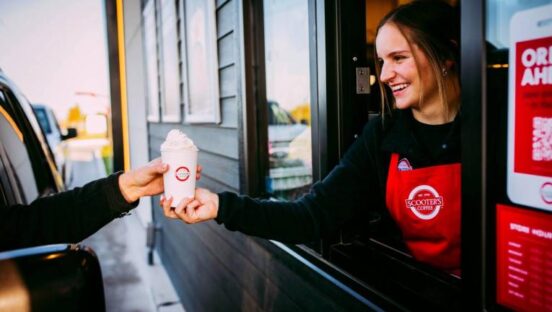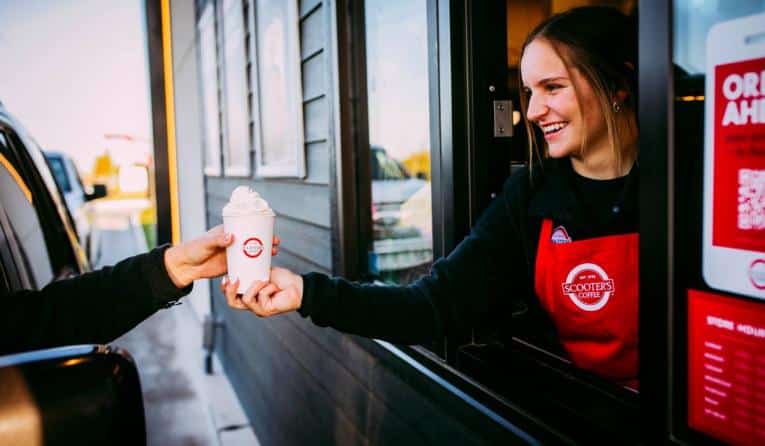Many different tactics can be utilized to optimize your coffee sales in the drive-thru (e.g., loyalty programs, more flavor options, new product options, etc.). But two strategies in particular squarely focus on increasing sales (of coffee and other menu items). These strategies are (one) increasing customer throughput and (two) increasing average check. These income-generating strategies will grow sales and strengthen your bottom line. They are straightforward, relatively fast, and easy to implement.
Strategy No 1. Increasing Customer Throughput
You can process more orders per hour by speeding up the order process, resulting in increased sales and happier customers. Here are ways to accomplish this strategy.
Simplify Your Menu. Cull your menu down to the fewest items that will satisfy virtually all your customers. Here are a couple of tactics to accomplish this simplification:
Conduct a TURF Analysis. (TURF is an acronym for Total Unduplicated Reach and Frequency). Over time, many brands increase their list of menu items but fail to remove existing menu items. Menu communications (menu boards, hand-held menus, kiosks, web, and digital) become cluttered and increasingly difficult for customers to navigate. In addition, operations, inventory, and staffing become increasingly complicated.
READ MORE: Check out the 2023 QSR Drive-Thru Report
TURF analysis can help by identifying the shortest list of menu items needed to satisfy the majority of customers. TURF’s mathematical analysis eliminates a risky “seat-of-your-pants” approach for identifying, which menu items can be safely eliminated without negatively impacting sales and customer loyalty.
In simple terms, TURF provides two types of information:
- The shortest list of menu items needed to satisfy the majority of consumers
- The average number of menu items on that list that customers would like to order
Conduct a Menu Complexity Analysis. This is another important tactic for simplifying your menu by rating each item on a numerical scale regarding its time and complexity to prepare and deliver. The rating is based on seven key factors that play an important role in the profitability of your business. Knowing your menu complexity scores is essential, as this information can significantly impact your restaurant’s bottom line. Low-scoring menu items (such as drip coffee) are less complex, while high-scoring ones (such as customized espressos) are more complex and take longer to prepare and assemble.
The key factors determining a menu item’s complexity score include assembly time average, cook time average, cook assembly rating, the total number of prep recipes used, unique prep recipes used, unique SKUs, and the number of stations needed to produce the item.
Once the rating numbers are added up, an overall complexity score for that individual menu item is formed. This exercise is conducted for every item on the menu, and once the complexity scores have been determined, you can use them to your advantage; to improve operations, streamline your menu, and reduce costs. Knowing your menu complexity scores can significantly impact your restaurant’s bottom line. These scores allow you to:
- Feature high-selling, low-complexity menu items
- Downplay (or eliminate) low-selling, high-complexity menu items
- Optimize staffing
- Reduce cost of goods by better understanding ingredient usage and reducing waste
- Enhance operational efficiency by streamlining operations related to cooking times, assembly times, recipe complexity, ingredient uniqueness, number of assembly steps, number of stations used, etc.
Strategy No 2. Increasing Average Check
Leveraging Customer Zone Merchandising. The most successful brands have recognized that menu communications in the drive-thru include more than what’s on the menu board. They understand that the drive-thru includes a collection of different “customer zones” (street zone; entry zone; pre-order zone; order zone; post-order zone; and exit zone). By identifying these zones, you can craft zone-specific communication strategies that promote popular high-margin coffee items, communicate coffee upsell (non-dairy alternatives), coffee customization options (double shots; signature flavor options), and suggest popular coffee/food pairings. By developing zone-specific menu communications along the entire drive-thru path-to-purchase (P2P), you can influence customer purchases (increasing check) and accelerate the decision and order process (improving throughput). For example, “staging” several messages for a signature coffee drink along the customers’ P2P.
Reengineering Menu Board Communications. The menu board is the most critical communication tool in the drive-thru. Menu reengineering is a business strategy and systematic process for building robust menu board communications. The process includes:
- Use the results of the TURF analysis to reduce the number of menu board listings objectively. Streamlining your menu will improve customer ease and speed of ordering and accelerate back-of-house menu item prep time
- Use the menu complexity scores to simplify the menu further while improving operations and reducing costs.
- Create a Menu Strategy. This is an essential step in how world-class foodservice communications are developed. It becomes the blueprint for reengineering your menu board, customer zone communications, and all other menu communications (mobile app, website, kiosks, etc.) Interestingly, many brands overlook having a documented menu strategy. But they are missing out. Having a menu strategy allows you to:
- Establish the key business objectives you wish to realize from reengineering your menu communications (examples: Increase profitability; build PM sales; increase food attach; attract a younger demographic)
- Prioritize menu categories and items based on their relative contribution to the business (examples: Espresso and frozen drinks are high-priority categories versus low-priority brewed coffee and tea)
- Identify what new menu items should be developed and which current items should be eliminated (examples: Add energy drinks; delete low-selling cup size)
- Guide how menu communications are designed to realize the desired business objectives (examples: Visually feature high priority categories and items; showcase flavor variety of new energy drinks; promote “perfect pairings” of beverages and food)
So, there you have it: two proven strategies to increase coffee sales—increasing throughput and the average check. Implementing these is like putting money in the bank.
Howland Blackiston is Co-Principal of King-Casey.








